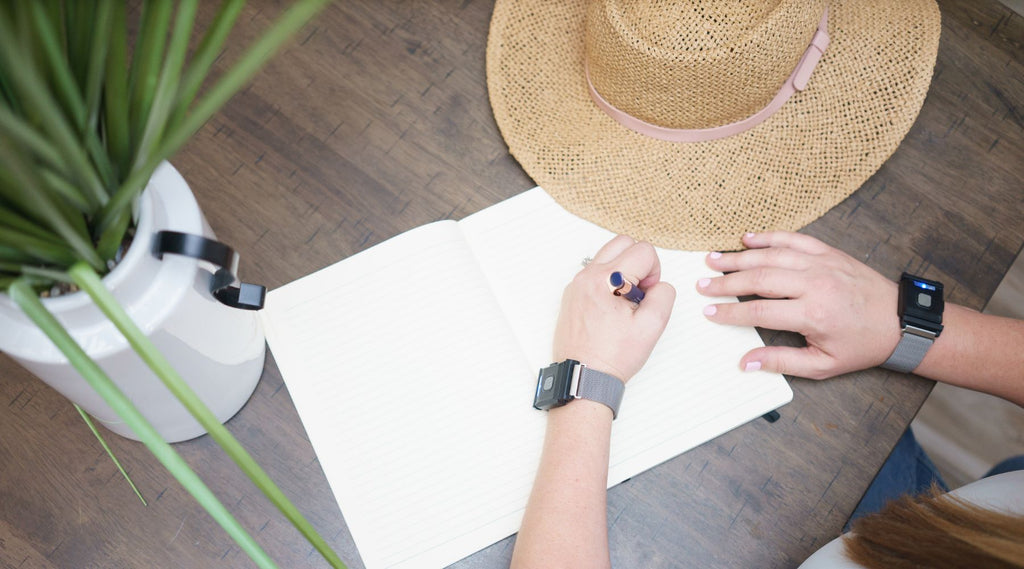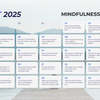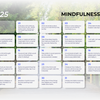How To Cope With PTSD Using Natural Methods

People who have post-traumatic stress disorder (PTSD) strive to live a normal life, but they are haunted by devastating events that happened in the past. PTSD is a mental health condition triggered by a horrifying event, such as a violent crime, accident, or catastrophe, that you witnessed or experienced. Some symptoms of PTSD include recurrent flashbacks of unwanted memories, severe anxiety, disturbing nightmares, severe emotional distress, and uncontrollable thoughts.
Most people who experience a traumatic event may have difficulty coping with these symptoms. For some, the severity of symptoms can take a heavy toll on their personal life and relationships. But with time and proper self-care, people with PTSD can cope better and move on with their lives.
Nonetheless, the journey to recovery from PTSD is different for every patient. Some are afraid of taking medications due to possible adverse side effects. For this reason, more patients search for natural ways to help them cope with their symptoms.
So, you may be wondering, what are the natural methods of treating PTSD? Continue reading to explore practical ways of managing PTSD naturally.
1. Take Drug-Free Alternatives
If you’re not keen on taking medications due to their adverse side effects, you should try drug-free alternatives, particularly herbal medicines.
Herbal medicines have been used to manage multiple illnesses for thousands of years. Until now, they continue to help people suffering from different kinds of diseases. More people are turning to them because they’re natural.
Here are drug-free alternatives that may reduce the anxiety caused by PTSD:
-
Rhodiola Rosea
Rhodiola Rosea, also known as Arctic root, is an herbal plant that thrives in the cold regions of Asia and Europe. It’s believed to reduce stress, anxiety, fatigue, and depression, commonly associated with PTSD.
This article explains that Rhodiola Rosea may help people having difficulty sleeping by reducing their stress factors. Taking 400 milligrams (mg) of Rhodiola Rosea daily is linked to reduced physical and mental fatigue, improving overall health and sleep quality.
-
Valerian Root
Valerian root is widely regarded as beneficial to those with insomnia or other sleep disorders. It’s also believed that this herb can alleviate anxiety brought on by stressful events.
According to a clinical trial, taking 530 mg of valerian root an hour before bedtime may help reduce anxiety, improve sleep quality and well-being, and relieve symptoms of depression.
However, more research is needed to explore the promising benefits of valerian root in helping people cope with PTSD.
-
Chamomile
Chamomile is another popular herb that functions as a natural sleeping aid by reducing symptoms of mental health conditions, such as depression.
Aside from sleeping benefits, chamomile is also believed to be potent in reducing feelings of anxiety. According to a 2016 study, there’s evidence that chamomile significantly reduces the impact of anxiety and depression when combined with supplements and aromatherapy.
However, more studies are needed to establish the positive effects of chamomile in PTSD.
2. Deep Breathing
This may sound ridiculous, but most people aren’t breathing correctly. The right way of breathing should involve the diaphragm, a muscle in the abdomen.
When you inhale, your abdominal cavity should expand. That means you’re taking in air and storing it down your abdomen for a short while. Then, when you release this air, your belly should return to normal.
Unfortunately, many people tend to forget how to execute proper breathing over time. Instead, they use their shoulders and chest to breathe, which leads to short breathing cycles that increase anxiety and stress.
But don’t worry since re-learning how to breathe properly is simple. All you need to do is breathe deeply from your diaphragm and practice it as often as possible to reduce your anxiety and prevent further stress.
3. Perform Progressive Muscle Relaxation
Progressive muscle relaxation (PMR) is widely regarded as an effective relaxation technique to combat chronic muscle pain as well as stress and anxiety.
PMR involves calming and tightening multiple muscle groups, like a pendulum. But the key to the process is focusing on one muscle at a time. For example, tighten your thighs (as in stretching), release the tension, and let it rest. Then, proceed to other muscle groups.
Here are the steps to perform PMR:
- Inhale and contract a specific muscle group, holding your breath for 5-10 seconds.
- Exhale as you release the tension in those muscles.
- Rest for 10-20 seconds before proceeding to another muscle group.
- When you release the tension, try to establish a strong mind-muscle connection by focusing on how your muscles contract and relax.
- Use your imagination to build a solid mind-muscle connection. For example, imagine your anxieties flowing out of your body as you release the tension.
- Repeat the procedure until all the muscle groups have been alternately tensed and relaxed.
4. Practice Mindfulness
Mindfulness is another technique that can help those who have PTSD. It refers to the practice of staying connected to the present moment without judgment. It involves a heightened awareness of your thoughts, feelings, and experiences. Mental health experts believe that being in this state of mind may relieve depression and feelings of anxiety.
To promote mindfulness in your day-to-day living, you can try the following suggested activities:
- Grab Your Pens And Doodle: Take a break and let your creativity flow through doodling or coloring.
- Get Walking: Spend some time walking and observing your environment. Focus on the smell of freshly cut grass, the sound of children playing, the breeze that touches your skin, and the delicate shape of flowers. It’s best to leave your phone at home when you’re out walking so there’d be no distractions.
- Wish People Happiness: It only takes a couple of seconds to spread positivity. You can send a message to your friends, wishing them happiness and luck. This is a great way to reduce anxiety and spread goodness to everyone.
- Stare At The Sky: Look up in the sky to ease the hurtful memories that cause your anxiety. Take some time to stare at the stars and contemplate the vastness of the cosmos. This will help you realize that your worries are nothing compared to the grandness and beauty of life.
5. Engage in Self-Monitoring
Self-monitoring is another natural method that is believed to be beneficial in reducing symptoms of anxiety in PTSD. It’s the practice of regulating your emotions and behavior and being aware of their impact on your surroundings. Also, it involves behavior modification when faced with environmental and situational variables.
Here are some signs that indicate self-monitoring:
- Saying and doing things to earn other people’s approval
- Observing other people and copying their behavior in social interactions
- Strongly considering other people’s opinions in your choice of words, clothes, and other matters
- Aligning your views to the will of the majority to gain their trust and acceptance
Self-monitoring could bring about heightened self-awareness, which helps contribute to positive changes in behavior. To help you monitor and evaluate the changes in your behavior, you can do the following:
- Define Your Target Behavior: Work on changing one behavior at a time to prevent extreme stress and anxiety. For example, you might consider those related to eating habits, physical activities, attitudes, and social interactions.
- Record The Changes: Take note of the behavior you want to change and record your progress. You should be able to compare your previous and current behavior, noting the improvement.
- Create A Schedule: This goes hand-in-hand with recording changes. Establish a schedule to check yourself and the activity you plan to do. For example, this may include setting tasks at different intervals throughout the day.
6. Practice Self-Soothing
Self-soothing is a technique that helps people promote better feelings and emotions to move forward despite pain and negativities from the past. It provides a ladder that allows you to climb back from that dark well and start feeling yourself again. You might want to try this technique that aims to reduce your anxieties and enable you to sleep better, think clearly, and calm your mind.
Here are some self-soothing strategies that may help you move on in life effectively:
- Blowing A Balloon: This is a great way to practice deep or diaphragmatic breathing, reducing the feelings of anger, confusion, and anxiety. Continue doing this until you feel better and calmer.
- Practice Square Breathing: Here’s an example of square breathing: inhale for five seconds, hold it in for five seconds, exhale for five seconds, and relax for the last five seconds. Imagine forming a side of a square for each step until you complete building a square.
- Hug Yourself: Giving yourself a compassionate touch helps your body produce a hormone called oxytocin. This hormone makes you feel safe, comfortable, and loved, gradually releasing the tension from your body.
7. Use Wearable Stress Relieving Technology
Access real-time solutions to calm the anxiety response with wearable stress relieving technology such as TouchPoints. TouchPoints are wearable stress relieving devices that work by altering the body's stress response with scientifically-proven BLAST (Bi-lateral Alternating Stimulation Tactile) technology. BLAST uses gentle, alternating vibrations on each side of the body to shift your brain from your default "fight or flight" response to your calm and in-control response. Over time, TouchPoints retrains your body, creating new behavior patterns that lessen the negative impacts of stress.
Users with PTSD use TouchPoints to manage panic attacks, prevent angry outbursts, to reduce unhealthy cravings, and to help them go to sleep or return to sleep if they wake in the nighttime.
Final Words
Combating the symptoms of PTSD is not easy and may take time. However, there are plenty of ways that may move you along the road to recovery. But never pressure yourself to heal immediately. Take all the time you need to heal the wounds of the past. Rushing things through may only prolong the recovery process if it results in relapse. Lastly, don’t forget to communicate with your therapist or doctor to monitor your condition closely.
*This article was written by Robert David.
Robert David is a writer focusing on community health and science. He regularly contributes to local newsletters and blogs to help bring medical knowledge to the community. He tends to his home garden and enjoys cooking on his spare time.




